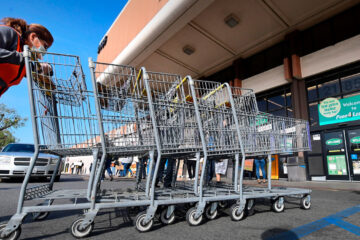Over the past few months, luxury fashion house Hermès (HESAY) , famous mostly for its expensive (and exclusive) Birkin and Kelly handbags, has seen increased consumer momentum, despite recent macroeconomic challenges.
In Hermès’ first-quarter earnings report for 2025, it revealed that its sales in the Americas increased by 11% year-over-year.
💵💰Don’t miss the move: Subscribe to TheStreet’s free daily newsletter 💰💵
Specifically, sales in leather goods and equestrian equipment spiked by 10% during the quarter, while apparel and accessories increased by 7%. However, sales of its watches declined by 10%.
Related: Amazon dupes a popular luxury product, and it’s already sold out
The increased sales come at a time when U.S. consumers are battling inflation and a higher cost of living. President Donald Trump also recently enforced tariffs (taxes companies pay to import goods from overseas) on multiple countries, which has caused consumer anxiety about possible price increases for goods.
“In a more uncertain economic and geopolitical context, the group (Hermès) has moved into 2025 with confidence,” said Eric du Halgouët, Hermès executive vice president of finance, during a recent earnings call.
Hermès responds to a growing threat
On April 2, Trump announced a 10% “baseline” tariff on all countries importing goods to the U.S., with roughly 60 countries seeing higher tariff rates. However, on April 9, he enforced a 90-day pause on reciprocal tariffs on all countries (except China), dropping them to a universal rate of 10%.
Hermès’ popular Birkin bags may cost consumers a bit more in the near future.
Image source: Jeremy Moeller/Getty Images
In response to this move, Hermès revealed that it will be increasing its prices in the U.S.
“We’ve compensated the gross effect of that extra 10% by increasing our prices in the U.S., and we’ll do so from the 1st of May,” said Halgouët. “And we’ll do this across all the different divisions and businesses, that price increase.”
He said that the company had already increased its prices in the U.S. by 6% at the beginning of the year, and it is not planning to implement any price hikes in other regions. He also said that the company hasn’t yet pinpointed the amount of the price increase in the U.S.
“We haven’t set things in stone,” said Halgouët. “We are calculating things.”
Hermès follows in its competitor’s footsteps
Hermès’ main competitor LVMH, which owns beauty retailer Sephora and luxury brands such as Fendi and Dior, is planning a similar move in response to Trump’s tariffs.
During an earnings call on April 14, LVMH Chief Financial Officer Cecile Cabanis warned that the company’s potential price increases “will not be one-size-fits-all.”
Related: Dior pays a startling low price to produce a $2,780 handbag
“I think we all need to stay very calm because we are in unknown territories,” said Cabanis. “And we are now in a process with (a) 90-day suspension period, which we can hope will enable some negotiation and bring…positive outcomes. The world is never certain. Having said that, this is not under our control. So back to what is under our control, (the) price increase is one part.”
Unlike Hermès, LVMH saw a dip in U.S. sales during the first quarter of this year.
During the earnings call, LVMH flagged that it faced a “moderate deceleration” of 3% during the quarter despite increased sales of fashion, leather goods, watches, and jewelry. Sephora was one of the main reasons for the decline in its U.S. sales.
Price hikes can have major consequences
Price increases have the potential to drive away consumers and impact sales. Many Americans have already been pulling back their spending amid concerns about President Trump’s tariffs increasing prices.
More Retail:
AT&T quietly issues stern warning to customers Sam’s Club makes a big change to a beloved membership perkGameStop announces risky move amid store closures
According to a recent survey from market research company Numerator, 83% of U.S. consumers said that they are adjusting their shopping habits to prepare for the price increases tariffs could bring. Some of these changes include searching for sales and coupons, delaying purchases, buying less imported goods, and more.
A new survey from PYMNTS Intelligence also found that 42% of U.S. consumers are more likely to buy less designer clothing when they face higher prices.
Related: Veteran fund manager unveils eye-popping S&P 500 forecast


